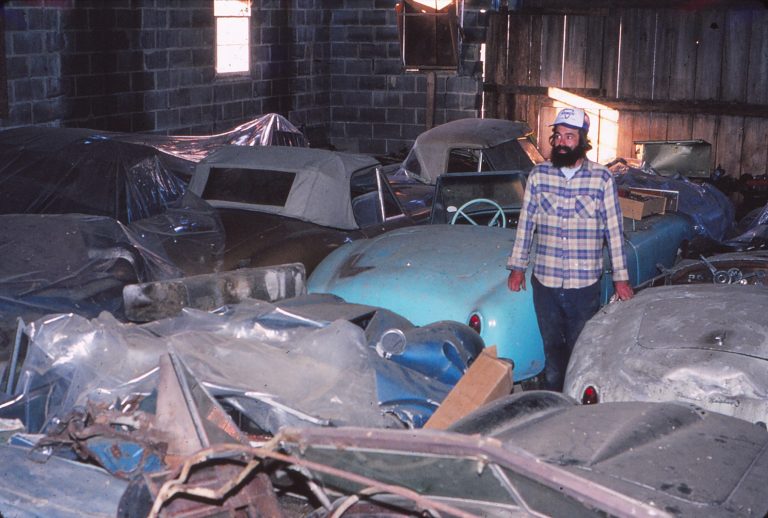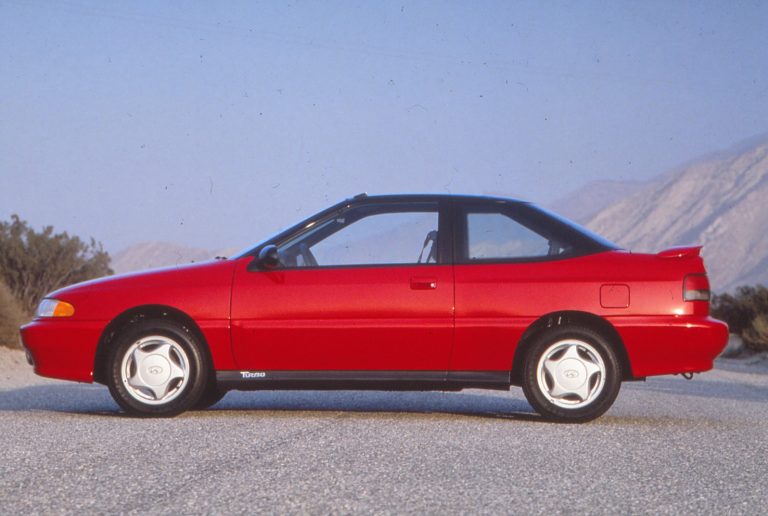History originally published in AutoWeek March 21, 1983
How embarrassing. I had spun the Turner, depositing in the dirt in a shower of mud and dust. Naturally enough, I had stopped spinning facing the track so that I had to witness the procession of seemingly everyone out on the track. All of whom have been not far behind me when I spun. And all of whom, of course, would be sniggering in their helmets about the contretemps of the hotshot journalist. I kept my eyes fixed on the corner workers so I wouldn’t have to look.
I had pirouetted no ordinary Turner into the toolies. Rather this was the ‘65 Turner 1500 Mk III in which Ron Kistler had won nationals at Marlborough, Vineland and Cumberland in 1966. Winning three nationals is not in itself so remarkable – though no mean feat – but that the car has escaped the normal evolutionary changes a racecar endures as it passes from season to season is rather unusual. The Turner, now in the hands of second owner Alan Modney, is all original, even down to the scrapes where Kistler squoze Dick Thompson’s Yenko Stinger off the track at Cumberland. Original even down to the bungee cord Kistler had applied to the trunk lid to make sure it stayed closed in the heat of battle. That’s original.
Kistler had ordered the car from the factory for SCCA D-production racing – right-hand-drive, Cosworth motor and no heater. Windshield and top were sent along in a box. The Ford pushrod engine, dominated by twin 40 DCOE Webers, was dynoed at 135 BHP. Koni shocks were installed in front with revalved Armstrongs at the rear. A front sway bar was added and the front shock towers reinforced. Other modifications included cold air ducting to the carbs, oil cooler and brakes, a Lotus close-ratio gearbox, Detroit locker limited slip and Hollywood Competition axle shafts. Weight is 1250 pounds, less than 10 pounds per horsepower.
Though he had been SCCA’s Northeast Division C-production champ in 1963 in an AC Bristol, Kistler was forced out by finances halfway through the 1966 season. A rule change for 1967 outlawed the twin 40 Webers, and the allowable two-barrel downdraft Weber left the car uncompetitive. Kistler parked it rather than race at the back of the pack. It stayed parked until 1981, when Kistler sold it to Alan Modney. The car’s only outings since then have been the 1982 Walter Mitty Challenge at Road Atlanta and my, uh, spin at Summit Point in the fall of 1982. The car has less than 1,000 honest miles on the odometer.
The Turner MKIII was both the high point and the end of the line for J.H. Turner’s car company. It had begun in what was a classic pattern in Great Britain in the ‘50s and ‘60s. Turner’s racing success in an MG K-3 and a home built Formula II led to a handful of replicas of the latter. Then, in 1955, came the little Austin-powered Turner 803. Over the years his sportsters, based on a rigid twin-tube ladder frame with suspension bits from various sources, grew in power and sophistication. Bigger Austin and then Coventry Climax engines were used and then Ford, the largest being the 1500cc Cortina units, producing 80 BHP in street trim. The use of a variety of suspension pieces resulted in some cars having different bolt patterns front and rear.
Turner utilized fiberglass for bodies, bonding it to the frame. None were a particularly exciting shape. It takes a practiced eye to pick one out in a crowd. Modney, who has owned ten Turners at one time or another, says that details often change from one serial number to the next, especially with small parts like taillamps. It’s almost as if the shop gopher were sent with a fistful of Sterling to buy a case of whatever rear lamps were on sale – anonymous styling if it ever existed. Which probably suited Jack Turner, for if a “sports car” is road car which can be raced, then what Jack Turner produced were racecars which could also be driven on the road. And you don’t win races with pretty faces.
If the exterior styling is unremarkable, the interior is commonplace. The dash, with its off-the-shelf gauges, is straightforward. The driving position is terribly normal feeling despite the right hand drive. Even the absence of a full windshield in favor of a small racing screen seems natural. The car somehow belongs this way.
With the engine warm, starting is easy. The big Webers, though, don’t take well to idling, the engine refusing to hold a steady speed even with a little extra RPM. Blipping the throttle is a necessity. All is forgiven coming out of the pits, though. The English Ford buzzes like a bandsaw on piece work and I get an authoritative little shove back into the seat. The stubby shifter clicks precisely in the second, zigzags to third and back to fourth. Before I know it I’m up against the rev limiter in high – somewhere just to the far side of 100 with this rear end. The car is quick.
Also quick and very sensitive is the steering, and my path for about the first lap resembles that of a novice canoeist. Which is to say where the track went straight, I didn’t. Once I get that under control, another problem arose – the cold surface of the track. Late November temperatures didn’t allow the racing tires to get anywhere near warm, the result being a very skatey ride in the corners.
Still, after a few laps and self-admonishment to practice driving-school smoothness and journalistic restraint – that is, after all, for driving impression, not setting a lap record – it starts to come together for me. Steering sensitivity becomes responsiveness, and I’m able to match the overabundance of power with the limited traction available. I started to draw a bead on the other traffic on the track. Not racing mind you but close enough. Then closing on Max Rubin’s BMW 323i, it happened. The Turner went off song, missing one or two cylinders. Instead of swinging past the Beemer, I swung into the pits. The trouble, we eventually discovered but couldn’t immediately remedy, with fuel blockage to one of the carbs. Racing luck.
Like spinning out. My excuse (everybody has one) was getting on the gas too soon and too heavy on those cold, hard tires. In a way, it’s a bit like what brought about the end of Jack Turner’s car building. Turner had tried to do too much, producing a GT model introduced in 1962, and of which only nine were made between then and 1964. Another fixed-head model with the rear mounted Hillman Imp engine reach prototype stage in 1965. These two projects, plus an effort to develop a twin-cam head for the BMC “A” block, lost a lot of money. Over the years, Turner had built about 750 cars, cars it achieved racing success far in excess of their production, but in 1966, Jack Turner spun into receivership for trying too hard.













